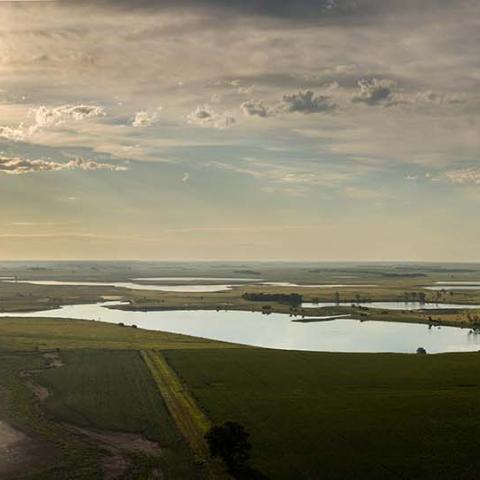
Press Release

The intent of the Water Bank Program is to keep water on the land for the benefit of migratory wildlife such as waterfowl.
The Water Bank Program (WBP) is an NRCS conservation program that enables landowners and operators to keep water on the land to protect wetlands and provide wildlife habitat. For 2022, $4 million is available for the program.
The program:
As part of a 10-year rental agreement, landowners receive annual payments for conserving and protecting wetlands and adjacent lands from adverse land uses and activities, such as drainage, that would destroy the wetland characteristics of those lands.
To be eligible to participate in the WBP, a person must:
Financial assistance will not be available for conservation practices through WBP. WBP participants who wish to establish or maintain conservation practices may apply for financial assistance through other NRCS or state financial assistance programs where available. NRCS will assist participants with developing a Conservation Plan of Operations (CPO) for the enrolled land and associated adjacent land when applicable.
Land enrolled in WBP may not be cropped. NRCS may authorize haying under limited circumstances, such as severe drought. NRCS may authorize grazing where necessary to enhance the wetland functions and values of the land under agreement.
Each participating farm or ranch will enter into a WBP agreement, which will become effective on January 1 of the calendar year in which the agreement is approved. WBP contracts are non-renewable, 10-year rental agreements. Rental payments are made annually.
Eligible applications from the High category will be funded first, followed by the Medium and Low categories.
The State-established ranking criteria will emphasize the project’s environmental benefits, cost, availability of matching funds, and significance of wetland functions and values.
Contact your local service center to start your application.
Do you farm or ranch and want to make improvements to the land that you own or lease?
Natural Resources Conservation Service offers technical and financial assistance to help farmers, ranchers and forest landowners.

To get started with NRCS, we recommend you stop by your local NRCS field office. We’ll discuss your vision for your land.
NRCS provides landowners with free technical assistance, or advice, for their land. Common technical assistance includes: resource assessment, practice design and resource monitoring. Your conservation planner will help you determine if financial assistance is right for you.
We’ll walk you through the application process. To get started on applying for financial assistance, we’ll work with you:
Once complete, we’ll work with you on the application, or CPA 1200.
Applications for most programs are accepted on a continuous basis, but they’re considered for funding in different ranking periods. Be sure to ask your local NRCS district conservationist about the deadline for the ranking period to ensure you turn in your application in time.
As part of the application process, we’ll check to see if you are eligible. To do this, you’ll need to bring:
If you don’t have a farm number, you can get one from USDA’s Farm Service Agency. Typically, the local FSA office is located in the same building as the local NRCS office. You only need a farm number if you’re interested in financial assistance.
NRCS will take a look at the applications and rank them according to local resource concerns, the amount of conservation benefits the work will provide and the needs of applicants. View Application Ranking Dates by State.
If you’re selected, you can choose whether to sign the contract for the work to be done.
Once you sign the contract, you’ll be provided standards and specifications for completing the practice or practices, and then you will have a specified amount of time to implement. Once the work is implemented and inspected, you’ll be paid the rate of compensation for the work if it meets NRCS standards and specifications.